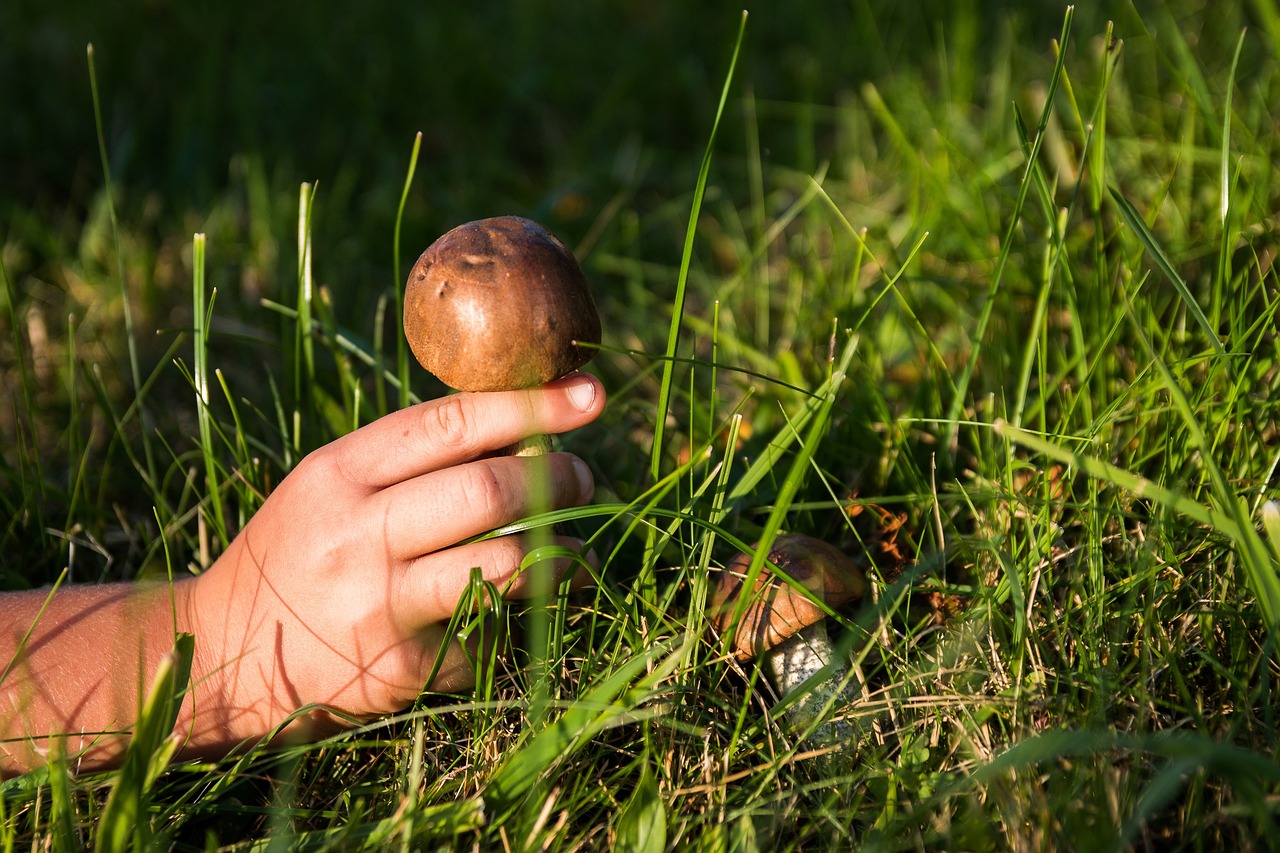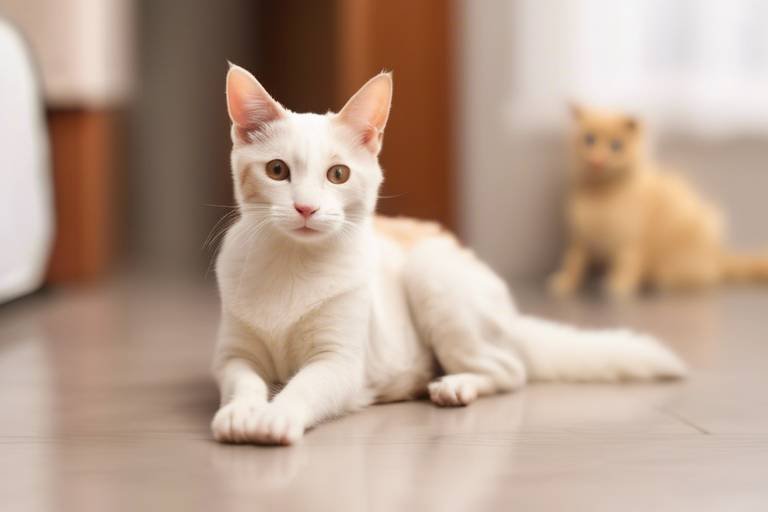What to Do If Your Pet Is Poisoned by Plants
As a pet owner, the thought of your furry friend getting poisoned by plants can be a heart-stopping moment. It’s essential to be prepared and know the steps to take if you ever find yourself in this distressing situation. Plants can be beautiful additions to our homes and gardens, but some can pose serious risks to our pets. The first thing to remember is that time is of the essence. The quicker you act, the better the chances of a positive outcome for your beloved companion. In this article, we will guide you through recognizing symptoms, taking immediate actions, and implementing preventative measures to ensure your pet’s safety.
Identifying the symptoms of plant poisoning in pets is crucial for swift intervention. Common signs include vomiting, diarrhea, lethargy, and unusual behavior. For instance, if your dog suddenly starts acting sluggish or your cat refuses to eat, these could be red flags. Additionally, you might notice excessive drooling or difficulty breathing. It's important to remember that symptoms can vary depending on the type of plant ingested and the size of your pet. Being vigilant and observant can make all the difference, so don’t brush off any strange behavior as just a passing phase.
If you suspect your pet has ingested a toxic plant, there are critical steps you need to follow to ensure their safety. First, stay calm and assess the situation. Panicking won’t help your pet, and a clear mind will allow you to act swiftly. Next, contact your veterinarian or an emergency animal clinic for immediate advice. They can guide you on the best course of action based on the symptoms your pet is displaying and the plant involved.
Reaching out to your veterinarian immediately is paramount. When you call, be ready to provide them with specific details about the plant your pet may have ingested, including its name and any visible symptoms. This information will help them tailor their advice and treatment plan. Remember, veterinarians are your best allies in these scenarios, so don’t hesitate to reach out.
Gathering information about the plant involved is vital. If possible, take a picture of the plant or bring a sample with you to the vet. Knowing the plant's characteristics, such as its name, size, and any distinguishing features, can significantly aid your veterinarian in determining the best course of action. This can be the difference between a simple treatment and a more complex intervention.
While waiting for professional help, it’s essential to assess your pet’s overall condition. Check for any visible symptoms such as swelling, difficulty breathing, or changes in consciousness. Take note of how long ago the ingestion occurred, as this information can be crucial for your vet. Being thorough in your assessment will ensure you provide accurate and helpful information, which is critical for effective treatment.
While waiting for veterinary assistance, there are some home remedies and first aid measures you can consider. However, proceed with caution! For example, you might try to induce vomiting if advised by your vet, but only do this if they recommend it. Additionally, keeping your pet calm and comfortable can help reduce stress and further complications. Remember, these measures are not substitutes for professional treatment but can be helpful in the interim.
Prevention is always better than cure. To keep your pets safe from plant poisoning, it’s essential to identify and remove any toxic plants from your home and garden. Familiarize yourself with common household and garden plants that are known to be toxic to pets, such as lilies, azaleas, and oleander. By educating yourself, you can make informed choices when selecting greenery for your space.
Here’s a quick reference table of some common toxic plants to watch out for:
| Plant Name | Symptoms of Poisoning |
|---|---|
| Lilies | Kidney failure, vomiting, lethargy |
| Azaleas | Diarrhea, vomiting, cardiac issues |
| Oleander | Severe heart problems, vomiting, death |
Creating a pet-friendly environment is crucial. Secure or remove any toxic plants from your home and garden, and consider using pet-safe plants instead. This proactive approach not only protects your pets but also gives you peace of mind. Think of your home as a sanctuary for your furry friends, where they can roam freely without the risk of harm.
Q: What should I do if I don't know what plant my pet ate?
A: If you’re unsure about the plant, take a picture and describe it to your veterinarian. They can help identify it and suggest the next steps.
Q: Can I treat my pet at home if they show symptoms?
A: While some home remedies may help, it’s always best to consult your veterinarian first. They can provide the safest and most effective treatment options.
Q: How can I prevent my pet from eating plants?
A: Training your pet to avoid certain areas and providing them with safe toys can help. Additionally, keeping toxic plants out of reach is essential.

Recognizing Symptoms of Plant Poisoning
When it comes to our furry friends, their health is a top priority. One of the sneaky dangers that can lurk in our homes and gardens is plant poisoning. Many common plants can be toxic to pets, and recognizing the symptoms early can make a world of difference. It's like being a detective in your own home, piecing together clues that reveal something isn't right with your pet.
So, what should you look for? If your pet has ingested a toxic plant, you may notice a combination of symptoms that can vary depending on the type of plant and the amount consumed. Here are some common signs to keep an eye out for:
- Vomiting: This is often one of the first signs. If your pet is throwing up, it could be their body’s way of trying to rid itself of the toxins.
- Diarrhea: Just like vomiting, diarrhea can indicate that something is amiss. It’s your pet’s way of expelling harmful substances.
- Lethargy: If your usually playful pup or curious kitty is suddenly more sluggish than a tortoise, it could be a sign of poisoning.
- Unusual Behavior: Keep an eye out for any changes in behavior. Is your pet hiding more than usual? Are they disoriented or shaking? These could all be red flags.
It’s important to remember that these symptoms can also indicate other health issues, but when paired with a known exposure to toxic plants, they become particularly concerning. Think of it like a puzzle; each symptom is a piece that helps complete the picture of what might be happening to your pet.
If you notice any of these symptoms, don't wait for it to get worse. The quicker you act, the better the chances of a positive outcome. Imagine your pet as a superhero; they rely on you to be their sidekick, ready to spring into action at a moment's notice. Your vigilance can save the day!
In addition to the symptoms mentioned, be aware of more severe signs such as seizures or difficulty breathing, which require immediate veterinary attention. The key takeaway here is to trust your instincts. If something feels off, it probably is. Your furry friend can’t voice their discomfort, so you have to be their advocate.
In conclusion, by being aware of the signs of plant poisoning, you can ensure that you’re always one step ahead. Just like you would scan the horizon for storm clouds, keep an eye on your pet’s behavior and health. Your attentiveness can make a significant difference in their well-being.
Q: What should I do if I suspect my pet has eaten a toxic plant?
A: If you suspect your pet has ingested a toxic plant, contact your veterinarian immediately. Provide them with details about the plant and your pet's symptoms for the best guidance.
Q: Can all plants be harmful to pets?
A: Not all plants are toxic, but many common household and garden plants can be harmful. It's essential to research and identify which plants are safe for pets.
Q: How can I prevent my pet from eating toxic plants?
A: Create a pet-friendly environment by removing or securing any toxic plants. Consider using pet-safe plants and keeping a close eye on your pet when they’re in areas with greenery.

Immediate Steps to Take
When you suspect that your beloved pet has ingested a toxic plant, the first thing to do is to stay calm. Panic can cloud your judgment, and your pet needs you to be their advocate in this critical moment. Start by assessing the situation. Look around your home or garden to identify the plant in question. Is it a well-known toxic species, or could it be something relatively harmless? Knowing this can significantly influence the next steps you take.
Once you've identified the plant, it’s time to act. Immediately contact your veterinarian or an emergency animal clinic. Provide them with as much information as possible, including:
- The name of the plant
- Your pet's size and breed
- Symptoms your pet is exhibiting
- The amount of the plant ingested, if known
This information is crucial for your veterinarian to determine the best course of action. They might ask you to bring your pet in for an examination or advise you on what to do at home.
Never underestimate the importance of timely communication with your veterinarian. They are your best resource in these situations. When you call, explain the situation clearly and concisely. Your vet will appreciate your detailed description of your pet’s symptoms and the plant involved. This will help them tailor their advice specifically to your pet's needs.
As you gather information about the plant, make sure to note its characteristics. If you can, take a picture of the plant or bring a sample with you to the vet. This can be incredibly helpful, especially if the plant is not commonly known. Some plants may look similar, and having visual aids can assist your veterinarian in making an accurate diagnosis.
While waiting for professional help, it’s essential to assess your pet’s condition. Check for signs such as:
- Vomiting
- Diarrhea
- Lethargy
- Unusual behavior, like hiding or excessive vocalization
Take note of these symptoms, as they can provide valuable clues to your veterinarian. If your pet is conscious and alert, try to keep them calm and comfortable while you wait for advice.
While it’s always best to consult a veterinarian, there are some first aid measures you can take at home to stabilize your pet until professional help arrives. For instance, if your pet is experiencing mild gastrointestinal upset, you might consider withholding food for a few hours to give their stomach a break. However, do not induce vomiting unless directed by a veterinarian, as it can sometimes do more harm than good.
In summary, when faced with the scary situation of potential plant poisoning, remember to stay calm, gather information, and reach out to your veterinarian immediately. Your quick and informed actions can make a significant difference in your pet's recovery.
Contacting Your Veterinarian
When you suspect that your beloved pet has ingested a toxic plant, the first and most critical step is to contact your veterinarian as soon as possible. Time is of the essence, and your vet is your best ally in navigating this stressful situation. Before you pick up the phone, take a deep breath and gather your thoughts. This will help you communicate effectively and ensure that your veterinarian has all the necessary information to assist your pet promptly.
Start by clearly explaining the situation. Provide details such as:
- Your pet's symptoms: Are they vomiting, lethargic, or showing any unusual behavior?
- The type of plant: If you know the name of the plant, share it. If not, describe its appearance as best as you can.
- Time of ingestion: When do you think your pet ate the plant? This can significantly affect treatment options.
- Your pet's medical history: Any pre-existing conditions or medications can impact the vet's recommendations.
Remember, the more information you provide, the better equipped your veterinarian will be to give tailored advice. They may ask you to come in immediately or provide instructions for first aid at home. In some cases, they might suggest inducing vomiting or monitoring your pet closely until you can reach the clinic.
Additionally, it’s beneficial to keep the contact information of your veterinarian handy, along with the details of an emergency vet clinic. This way, you won't waste precious moments searching for numbers in a panic. In fact, having a pet emergency kit ready at home can also make a significant difference. Include items such as a copy of your pet's medical records, a list of toxic plants, and emergency contact numbers.
Lastly, don't hesitate to ask questions during your call. Understanding the situation can help alleviate your fears and prepare you for the next steps. Your veterinarian is there to support you and your pet, so lean on their expertise!
- What should I do if I can't reach my veterinarian? If you can't get a hold of your regular vet, try contacting an emergency veterinary clinic in your area. They can provide immediate assistance and advice.
- Can I treat my pet at home? While some minor cases may allow for home treatment, it's always best to consult with a veterinarian first to avoid worsening the situation.
- How can I prevent my pet from eating toxic plants in the future? Educate yourself about common toxic plants and remove them from your home. Creating a safe environment is key to keeping your furry friends healthy.
Gathering Information on the Plant
When it comes to ensuring the safety of your furry friend, gathering information about the plant involved in a poisoning incident is crucial. The first step is to identify the plant your pet may have ingested. This might seem daunting, especially if you're not a plant enthusiast, but it can be as simple as taking a picture of the plant and using a plant identification app or website. Many apps allow you to upload photos and receive instant feedback on the plant's identity. If you're unsure, don't hesitate to reach out to local gardening groups or forums where members can help you with identification.
Once you have the name of the plant, research its toxicity. There are many reliable online resources that provide detailed information about common household and garden plants and their effects on pets. Websites such as the ASPCA's Poison Control Center or the Pet Poison Helpline are excellent starting points. These resources often list symptoms associated with each plant, which can help you understand what to look for in your pet.
In addition to identifying the plant, it's beneficial to note specific characteristics that may assist your veterinarian in determining the best course of action. Consider the following factors:
- Plant Name: The exact name of the plant can help in providing accurate treatment.
- Plant Part Ingested: Different parts of the plant (leaves, stems, flowers, roots) may have varying levels of toxicity.
- Quantity Consumed: Knowing how much your pet might have eaten can aid in assessing the severity of the situation.
- Time of Ingestion: When did the ingestion occur? This information can be critical for your veterinarian to provide timely treatment.
Finally, if possible, take a sample of the plant to your veterinarian. This can help them identify the plant more quickly and determine the necessary treatment. Remember, staying calm and acting swiftly can make a big difference in your pet's recovery.
Q: What should I do if I can't identify the plant?
A: If you're unable to identify the plant, describe it as best as you can to your veterinarian. Providing details such as color, size, and shape can help them assist you better.
Q: Are all plants toxic to pets?
A: No, not all plants are toxic. However, many common household and garden plants can be harmful, so it's essential to research and know which ones to avoid.
Q: What are the signs of plant poisoning in pets?
A: Common signs include vomiting, diarrhea, lethargy, drooling, and unusual behavior. If you notice any of these symptoms after your pet has been near a plant, seek veterinary assistance immediately.
Assessing Your Pet’s Condition
When you suspect that your furry friend has ingested a toxic plant, the first thing to do is to stay calm. Panic can cloud your judgment, and your pet needs you to be level-headed. Start by observing your pet closely for any signs of distress. Look for symptoms such as vomiting, diarrhea, or lethargy. These symptoms can vary in severity depending on the type of plant ingested, so it’s crucial to take note of anything unusual. For instance, if your pet suddenly becomes less active or refuses to eat, this could be a red flag.
Next, assess your pet’s overall behavior. Is your pet acting differently than usual? Sometimes, pets might exhibit unusual behavior such as hiding, whining, or being overly clingy. These changes can provide important clues about their condition. Keep an eye on their breathing; if it seems rapid or labored, this could indicate a serious issue that requires immediate attention.
While you're observing, it’s also essential to check for physical symptoms. Look for any signs of swelling, redness, or irritation around the mouth and paws. If your pet has been chewing on a plant, these areas might show signs of distress. Take note of any abnormal drooling or foaming at the mouth, as these can be critical indicators of poisoning. You can even use a simple checklist to help you remember what to look for:
- Vomiting
- Diarrhea
- Lethargy
- Unusual behavior
- Swelling or redness
- Drooling or foaming at the mouth
Once you’ve gathered this information, it’s time to take action. You’ll want to relay these observations to your veterinarian. The more detailed information you can provide, the better they can assist you. For example, if you know the specific plant and its characteristics, this can significantly influence the treatment plan. So, jot down everything you can about your pet’s symptoms and the plant involved before making that crucial phone call.
In summary, assessing your pet’s condition involves a careful and thorough examination of their behavior and physical state. By being observant and proactive, you can provide your veterinarian with the vital information needed to ensure your pet receives the appropriate care swiftly. Remember, time is of the essence when it comes to potential poisoning!
Q: What should I do if I don't know what plant my pet ingested?
A: If you’re unsure about the plant, take a picture of it and bring it to your veterinarian. They can help identify it and determine the necessary steps for treatment.
Q: How can I prevent my pet from eating toxic plants?
A: Educate yourself about common toxic plants and remove them from your home and garden. Creating a safe environment is key to preventing plant poisoning.
Q: Are all plants toxic to pets?
A: No, not all plants are toxic. However, many common household and garden plants can be harmful. Research is essential to know which plants are safe for your pets.
Q: What are the signs of plant poisoning in pets?
A: Common signs include vomiting, diarrhea, lethargy, and unusual behavior. If you notice any of these symptoms, contact your veterinarian immediately.
Home Remedies and First Aid
This article provides essential guidance on identifying plant poisoning in pets, immediate actions to take, and preventive measures to ensure the safety of your furry friends.
Learn to identify common symptoms in pets that indicate plant poisoning, including vomiting, diarrhea, lethargy, and unusual behavior, which can help you act quickly in an emergency.
Discover the crucial first steps to take if you suspect your pet has ingested a toxic plant, including assessing the situation and contacting a veterinarian for advice.
Understand the importance of reaching out to your veterinarian immediately, providing them with details about the plant and your pet's symptoms for tailored guidance.
Learn how to gather essential information about the plant involved, including its name and characteristics, to assist your veterinarian in determining the best course of action.
Find out how to evaluate your pet’s overall condition and symptoms to provide your veterinarian with accurate information, which is critical for effective treatment.
In the unfortunate event that your pet has ingested a toxic plant, there are some home remedies and first aid measures you can consider while waiting for professional help. First and foremost, remain calm; your pet can pick up on your anxiety, which may exacerbate their distress. If your pet is conscious and alert, encourage them to drink water, as hydration can help flush out toxins. However, if they are showing severe symptoms like vomiting or lethargy, it's best to avoid giving them food or water until you consult with your veterinarian.
Another potential first aid measure is to induce vomiting, but this should only be done under the guidance of a veterinarian. If your vet gives you the green light, you can use hydrogen peroxide (3% solution) to safely induce vomiting in dogs. The general rule is to administer 1 teaspoon per 10 pounds of body weight, but never exceed 3 tablespoons, and always follow your vet's advice. For cats, inducing vomiting can be trickier and should only be done with professional guidance.
While waiting for help, keep a close eye on your pet's symptoms. If they start to show signs of distress, such as difficulty breathing, seizures, or excessive drooling, be prepared to provide this information to your veterinarian. It's important to note that some pets may require immediate medical attention, and knowing their symptoms can help your vet determine the urgency of the situation.
Additionally, you can create a first aid kit specifically for your pets. This kit can include:
- Activated charcoal (only if advised by a vet)
- Hydrogen peroxide (for inducing vomiting)
- Gauze and bandages for minor injuries
- Thermometer (to check for fever)
- Emergency contact numbers for your veterinarian and poison control
Remember, these home remedies and first aid measures are not substitutes for professional veterinary care. They are merely interim steps to help your pet until you can get them to a vet. Always err on the side of caution and consult with a professional as soon as possible.
Discover proactive steps to prevent plant poisoning in pets, including identifying toxic plants and creating a safe environment for your furry companions.
Learn how to identify common household and garden plants that are toxic to pets, helping you make informed choices when selecting greenery for your home.
Understand the importance of creating a pet-friendly space by removing or securing toxic plants, ensuring your home is a safe haven for your beloved animals.
Q: What should I do if I suspect my pet has ingested a toxic plant?
A: Contact your veterinarian immediately and provide them with details about the plant and your pet's symptoms. They will guide you on the next steps.
Q: How can I tell if a plant is toxic to my pet?
A: Research common household and garden plants. Many resources are available online that list toxic plants for pets. Always double-check before bringing new plants into your home.
Q: Are there any home remedies I can use for plant poisoning?
A: While hydration is essential, it's crucial to consult your veterinarian before attempting any home remedies, including inducing vomiting.
Q: What are some signs of plant poisoning in pets?
A: Common symptoms include vomiting, diarrhea, lethargy, drooling, and unusual behavior. If you notice these symptoms, seek veterinary care immediately.

Preventing Plant Poisoning
Preventing plant poisoning in pets is not just about being aware of the dangers; it’s about taking proactive steps to create a safe environment for your furry friends. First off, understanding which plants are toxic is crucial. Many common household and garden plants can pose serious risks to pets, so it’s essential to do your homework. For instance, plants like lilies, azaleas, and oleander are notorious for being harmful. By familiarizing yourself with these plants, you can make informed choices about what greenery to include in your home or garden.
Moreover, it’s not only about knowing which plants to avoid but also about how to secure your living space. Consider creating a pet-friendly zone by removing or relocating any toxic plants. This could mean placing plants on high shelves or using barriers to keep pets away from certain areas. Additionally, if you’re an avid gardener, think about using pet-safe alternatives that can still bring beauty to your space without endangering your pets. For example, instead of traditional houseplants, you might opt for spider plants or bamboo palms which are less likely to harm your furry companions.
Regularly educating yourself and your family about the risks associated with plant poisoning is equally important. A family meeting to discuss which plants are safe and which are not can be a fun and informative activity. You can even create a small chart or table to hang in your home as a quick reference guide.
| Plant Name | Toxicity Level | Symptoms of Poisoning |
|---|---|---|
| Lilies | High | Vomiting, lethargy, kidney failure |
| Azaleas | Medium | Vomiting, diarrhea, heart issues |
| Oleander | High | Severe gastrointestinal distress, heart abnormalities |
| Spider Plant | Low | Generally safe, mild stomach upset in large amounts |
| Bamboo Palm | Low | Generally safe |
Another effective strategy is to regularly monitor your pets’ behavior, especially if they are known to chew on plants. If you notice them showing increased curiosity about certain plants, it might be time to take action by either removing those plants or training your pets to steer clear of them. Positive reinforcement techniques can work wonders in teaching pets what is off-limits. Think of it as setting boundaries, similar to how we teach children to avoid dangerous situations.
In conclusion, preventing plant poisoning requires a combination of knowledge, vigilance, and proactive measures. By understanding which plants pose risks, creating a safe environment, and educating yourself and your family, you can significantly reduce the chances of your beloved pets encountering harmful plants. Remember, a little effort today can lead to a safer, happier tomorrow for your furry companions!
- What should I do if I suspect my pet has ingested a toxic plant?
Contact your veterinarian immediately and provide them with details about the plant and your pet's symptoms. - How can I identify toxic plants in my home?
Research common household plants and consult resources or apps that list toxic plants for pets. - Are there any plants that are safe for pets?
Yes, many plants are safe, such as spider plants, bamboo palms, and certain herbs like basil and parsley. - How can I train my pet to avoid certain plants?
Use positive reinforcement techniques, rewarding them for staying away from plants that are off-limits.
Identifying Toxic Plants
When it comes to keeping our furry friends safe, knowledge is power. One of the most crucial aspects of pet care is being able to identify toxic plants that could pose a serious threat to their health. Many common household and garden plants can be harmful, and sometimes the most beautiful flowers can hide dangerous secrets. For instance, did you know that plants like lilies, azaleas, and oleander are highly toxic to pets? It's essential to be aware of these plants and take the necessary precautions to protect your pets.
To help you navigate the world of plants safely, here are some identifying features and tips for recognizing toxic plants:
- Research Common Toxic Plants: Familiarize yourself with a list of plants that are known to be toxic to pets. You can find many resources online or consult with your veterinarian for guidance.
- Observe Plant Characteristics: Toxic plants often have certain characteristics that can help you identify them. For example, many toxic plants have bright flowers or berries that can attract curious pets.
- Check Plant Labels: If you purchase plants, always check the labels. Many garden centers provide information on whether a plant is safe for pets.
Additionally, consider creating a plant inventory for your home and garden. This can be a simple table that lists each plant, its common name, and whether it is toxic to pets. Here's a quick example:
| Plant Name | Commonly Found In | Toxicity Level |
|---|---|---|
| Lily | Gardens, Floral Arrangements | Highly Toxic |
| Azalea | Gardens, Landscaping | Moderately Toxic |
| Oleander | Gardens, Outdoor Areas | Highly Toxic |
Creating such an inventory not only helps you keep track of what you have but also serves as a quick reference in case of an emergency. Remember, the more you know about the plants in your home and garden, the better you can protect your pets from potential harm.
In conclusion, being proactive about identifying toxic plants is vital for any pet owner. Regularly educating yourself and taking the time to assess your surroundings can save your pet from distressing situations. Always prioritize your pet's safety by ensuring your home is free of harmful plants, and don't hesitate to reach out to professionals if you have any doubts about a specific plant.
Q: What should I do if I suspect my pet has ingested a toxic plant?
A: Immediately contact your veterinarian or a local animal poison control center for guidance. Provide them with as much information as possible about the plant and your pet's symptoms.
Q: How can I find out if a plant is toxic?
A: Research online, consult with your veterinarian, or check reputable resources such as the ASPCA's list of toxic and non-toxic plants.
Q: Are there any safe plants I can have in my home?
A: Yes, there are many pet-friendly plants available, such as spider plants, Boston ferns, and bamboo palms. Always verify before introducing new plants into your home.
Creating a Safe Environment
Creating a safe environment for your pets is not just a precaution; it's essential for their well-being. Imagine your home as a sanctuary, a place where your furry friends can roam freely without the lurking danger of toxic plants. The first step in this protective journey is to identify and remove toxic plants from your living space. Many common household and garden plants can pose serious risks to pets. For instance, plants like lilies, azaleas, and philodendrons are notorious for their toxicity. By educating yourself about these plants, you can make informed decisions about what greenery is safe to have around.
But it doesn't stop at just removal; it's also about creating barriers to keep your pets safe. Consider using decorative screens or pet gates to section off areas with plants that are safe but might still pique your pet's curiosity. This way, you can enjoy your beautiful plants while ensuring your pets stay away from any potential hazards. Additionally, if you have an outdoor garden, it's crucial to monitor the plants in that space. Regularly inspect your garden for any new growth or changes that may introduce new risks.
Another proactive measure is to educate your family and friends about the plants in your home. Make it a point to inform anyone who visits about the potential dangers. You could even create a small guide that lists the toxic plants and their symptoms, so everyone is on the same page. This simple act of sharing knowledge can prevent accidents and ensure that everyone who interacts with your pets is aware of the risks.
Moreover, consider using pet-safe alternatives in your home decor. There are plenty of non-toxic plants that can beautify your space without posing a threat to your pets. Plants like bamboo palm, spider plant, and Boston fern are not only safe but also add a touch of nature to your home. By choosing these alternatives, you can create a green oasis that both you and your pets can enjoy.
Finally, always keep a close eye on your pets. Just like children, they are naturally curious and may attempt to nibble on plants out of sheer curiosity. Regularly check their behavior around plants and redirect them if you notice any interest in something that could be harmful. By being vigilant and proactive, you can create a safe haven for your beloved pets, allowing them to thrive in a secure environment.
- What should I do if my pet eats a toxic plant? - Contact your veterinarian immediately for guidance based on the specific plant and symptoms.
- How can I tell if a plant is toxic to my pet? - Research the plant species online or consult with a veterinarian to identify any potential risks.
- Are there any plants that are safe for pets? - Yes, many plants such as spider plants and Boston ferns are safe for pets. Always verify before introducing new plants.
- What are the common symptoms of plant poisoning in pets? - Symptoms can include vomiting, diarrhea, lethargy, and unusual behavior. If you notice these signs, seek veterinary help immediately.
Frequently Asked Questions
- What are the most common symptoms of plant poisoning in pets?
When your furry friend has ingested a toxic plant, you might notice symptoms like vomiting, diarrhea, lethargy, and even unusual behavior. These signs can vary depending on the type of plant and the amount consumed, so it's crucial to keep an eye on your pet's condition.
- What should I do if I suspect my pet has eaten a toxic plant?
If you think your pet has nibbled on a poisonous plant, the first step is to remain calm. Assess the situation, gather any information about the plant, and contact your veterinarian immediately. They can provide you with tailored advice based on your pet's symptoms and the specific plant involved.
- Are there any home remedies I can use while waiting for veterinary help?
While waiting for professional assistance, you can take some basic first aid measures. However, it's essential to avoid giving your pet anything without consulting your vet first. Sometimes, what seems like a good idea could worsen their condition!
- How can I identify toxic plants in my home or garden?
To keep your pets safe, familiarize yourself with common toxic plants. Resources like local veterinary offices, online databases, or pet safety websites can help you create a list of plants to avoid. Remember, knowledge is power!
- What steps can I take to create a safe environment for my pets?
Creating a pet-friendly space involves removing or securing any toxic plants in your home and garden. Consider using pet-safe alternatives for your greenery. Additionally, always supervise your pets when they're around plants, just to be on the safe side!



















